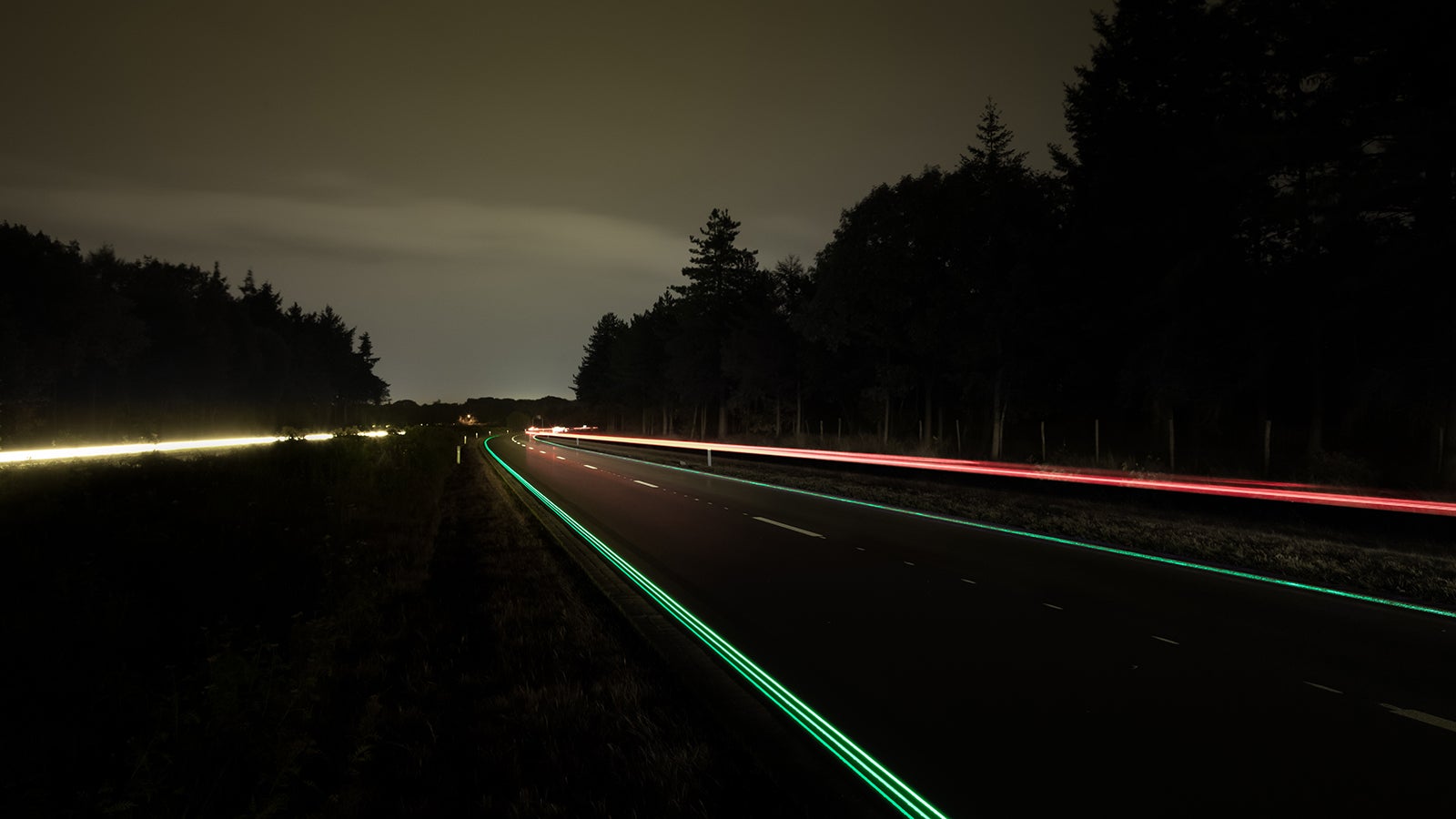One vision of the highway of the future
A dark highway stretches out before one lone car’s dim headlights. We’ve all seen movies with a foreboding scene like this, and we know things aren’t going to end well.


A dark highway stretches out before one lone car’s dim headlights. We’ve all seen movies with a foreboding scene like this, and we know things aren’t going to end well.
For the last 100 years, our love affair with cars has had a dark side that symbolizes danger, loneliness, and helplessness. Middle-of-nowhere breakdowns, carjackings, wrecks, traffic jams, stolen radios, smog–we love our cars, but with a healthy fear.
Cars that drive themselves, using massive computer power to take rational action in milliseconds, don’t evoke the same nightmares. Especially the clean electric ones like Tesla’s, which will be driving themselves in limited ways early next year. Autonomous cars don’t panic, don’t fall asleep at the wheel, pollute less, and relieve highway traffic congestion. They’re protectors, not threats.
That means our dark, lonely highways will evolve as well. When computerized brains are driving, road highway standards need better lighting, more consistent roadway design, and better surface signage.
In the Netherlands, the government is testing glowing highway lane markers developed by industrial designer Daan Roosegaarde. Pleasing to human eyes, they’re even more vital to self-driving vehicles, which rely on a complex array of cameras to track painted lines.
When cars are navigating, signage begins to look different too. The Clearview typeface used on highway signs, developed by the Federal Highway Administration especially for human eyes, will become secondary. Signs will become machine readable, like barcodes or QR patterns.
LED lights are already taking over highways owing to their immense cost-savings over metal halide bulbs, turning our nighttime cities a different color. The dim orange lights that used to hover over highways are giving way to lights that shine clean laboratory white.
The transformation might happen faster than we think. Ford is considering special autonomous cars for Uber, enabling them to serve suburban areas where paying human drivers isn’t economical. Hitachi Automotive Systems and Clarion are accelerating development of an advanced driver assistance system (PDF) that incorporates technologies owned by the company, including recognition sensors, stereo cameras, and electric power train components. (Another autonomous transporter, a single-passenger robot that navigates pedestrian lanes, is also in development by Hitachi.)
We won’t have to wait 20 years for these cars to filter into the general population; they’re coming in fleets. Tractor-trailers are quickly becoming autonomous, too. The faster we build, redesign, and adapt our roadways to robotic drivers, the sooner we can finally trust our cars the way we trust trains, subways, and airplanes.
Read more about the future of transportation at Hitachi’s Social Innovation site.
If you would like to receive alerts when new BULLETIN installments are published, sign up here.
This article was produced on behalf of Hitachi by the Quartz marketing team and not by the Quartz editorial staff.